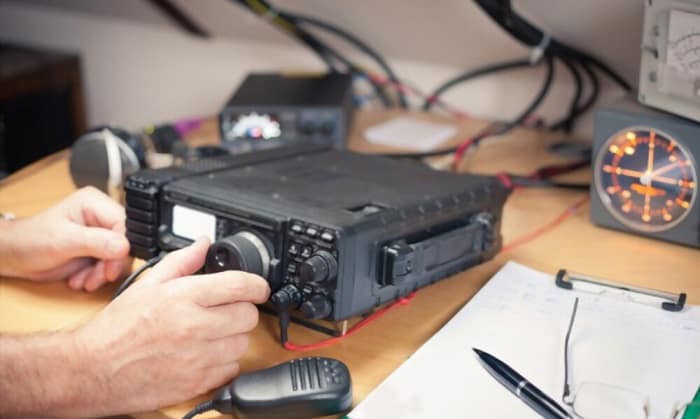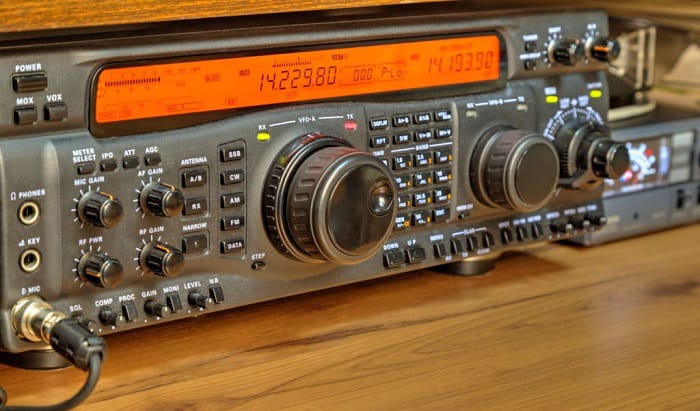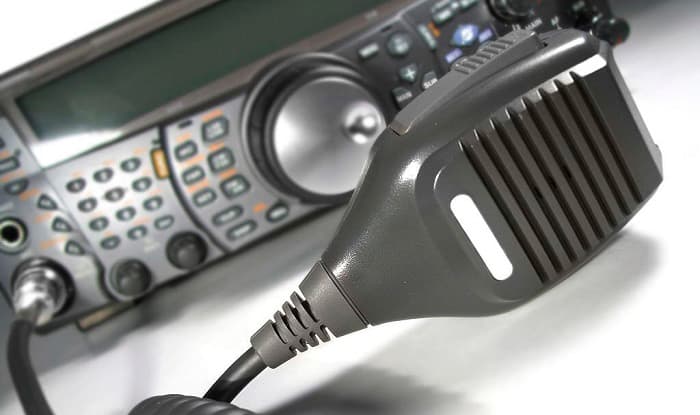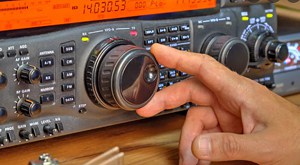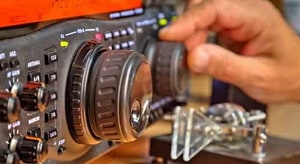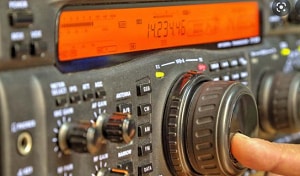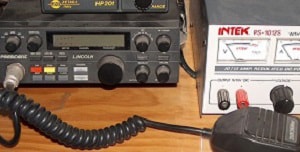These days, ham radios may no longer be the cool thing when it comes to communication, but it does not mean that amateur radios have been forgotten. It is still used by many, especially hobbyists.
If there is one thing that hinders people from using a ham radio, it would be their lack of knowledge on its use. That said, read on as I talk about how to operate a ham radio. It might sound intimidating at first, but as you practice, you will realize how easy it is!
Table of Contents
Things to Prepare for Operating a Ham Radio
To use a ham radio to communicate, below are the things that you will need:
- License
- Ham radio
- Power supply
- Mic
- Antenna
A Step-by-Step Guide to Operate a Ham Radio
When you see a ham radio for the first time, you might instantly be baffled. Especially if you grew up in the era of smartphones, ham radio operation might seem overwhelming. To make things easier, take note of the things I will talk about below.
Step 1: Get a License
Do you need a license to operate a ham radio?
Yes!
The first and perhaps most important step is to get a ham radio license. While the operation of the radio itself is straightforward, you will need a license. The requirements can vary depending on your location.
There are different types of licenses available, including the following:
- Technician License: If you are new to ham radios, this is the type of license you will need. You will need to pass one exam, which includes 35 questions. The questions are about radio theory, operating practices, and regulations. With this license, you can access ham radio frequencies above 30MHz.
- General License: This is the license for those who want to practice worldwide communications, as it will let you access more frequencies. Aside from passing a 35-exam question, you will need to go through a technician written exam.
- Amateur Extra License: By applying for this license, you will access all the operating privileges of an amateur radio. You will have to pass an exam with 50 questions.
Step 2: Set-Up Your Equipment
Before you can use your ham radio, you need to ensure its proper set-up. Buy the right radio, and you will have a pleasant experience with its operation. Do not skimp if you want to enjoy superior performance.
Refer to the manual and follow the instructions from the manufacturer on how you can operate the ham radio. It will often include plugging the radio into a power supply, connecting a microphone, and turning it on. Once it is properly set up, you can start the radio and talk to other users.
Make sure you have equipment that will optimize the performance of your ham radio. For instance, you will need an antenna. Indoors, it will extend coverage so you can reach far stations. A receiver is also necessary; it will let you play with different settings so you can customize the functionalities of the ham radio.
Step 3: Turn On the Radio
With the unit m plugged in, you turn it on. You can find the power switch at the back or front of the unit. It is often a rocker button. Some units will have a light, which will illuminate or change colors to let you know that the radio is ready for you to use.
Step 4: Set the Frequency
After turning on the radio, one of the first things you will need to do is to select the frequency. This will depend on the intended use of the unit. More importantly, it will determine the range of its coverage.
You have two main choices when it comes to the frequency of ham radio. The first is VHF or Very High Frequency. It ranges from 30 to 300MHz. The ham radio band is from 144 to 148MHz. It allows line of sight communications between two ham radios. It is also known for having minimal susceptibility to noise, so you can expect reliable transmission.
The second option is Ultra High Frequency or UHF. It has a range of 300MHz to 3GHz. For ham radios, you can choose from a range of 420 to 450MHz. It has a shorter wavelength than VHF, which also means that it is more prone to interference.
Step 5: Make Your First Call
One of the most important steps in this guide is to talk about making your first call. In this case, you will need to call CQ. This means you are connecting to a station instead of calling another person directly. It is a general call that will connect you to a random contact. Be prepared as anyone can answer your call.
The typical script goes like this – CQ, CQ, CQ Calling CQ. You can also follow it up by stating your call sign.
You should wait until someone answers your call. If no one is answering, you can try making contact again.
Step 6: Talk to the Person Who Answered
Once someone answers the radio call, talk. Remember, this is not like a smartphone where you have the luxury to talk for a long time. Keep your conversations concise. Say what you need to immediately. Some operators may be trying to contact other people, and you could be getting on the way.
Step 7: Join a Conversation
When using a ham radio, other people can hear your conversations. This means that anyone can join. Nonetheless, this does not mean that you have to intrude when parties are talking. The best way to join the conversation is to wait for someone to stop talking and introduce yourself.
If you are interrupting because of an emergency, say “break.” Otherwise, you should not be using it.
Step 8: Stay Away
While there are instances when you can participate in an existing conversation, there are also times when you should stay away. For instance, if there is a DX-ing contest, you should not interrupt. This means that people in the contest are finding out who amongst them can reach the farthest station. You must wait for the contest to be over before you can intervene.
Step 9: End a Conversation
Ending the conversation is as important as starting it. If you look for ham radio tutorials, you will see that most of them require you to pay attention to radio etiquette. Hence, familiarize yourself with how you can politely end a conversation. You can sign off by saying 73 or Best Regards, which is a signal that you are closing the talk.
Conclusion
At this point, we hope that you learned a thing or two about how to operate a ham radio. While it is designed for amateurs, a lot might find its operation overwhelming.
You will need a license, so you must pass an exam before you can use one. Nonetheless, once you have the license, you will realize that using a ham radio is fun and easy.

Hi, I am Amaro Frank – the Wind Up Radio’s content editor and writer. Working with Adam is so much fun, as his stories and experiences enrich my knowledge about radio communications and radio accessories. My main tasks in Wind Up Radio are building content and generating great articles on different topics around radio accessories.


